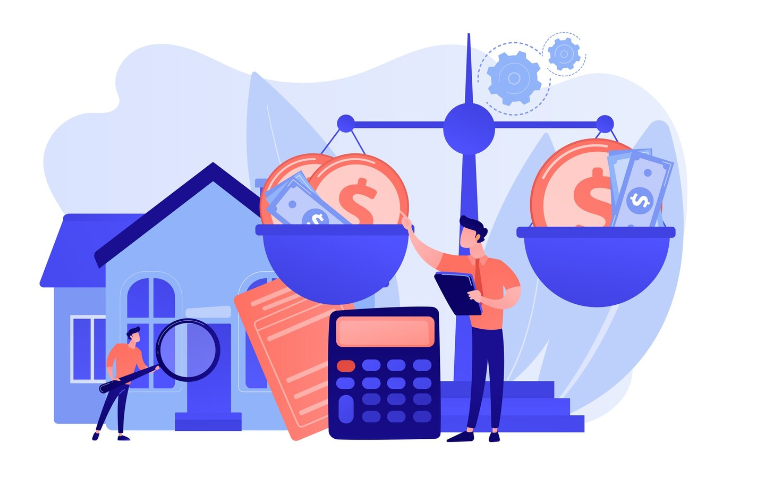What Are Assets and Liabilities?
In accounting, assets, liabilities, and equity form the three major categories on a company’s balance sheet, one of the most critical financial statements for small businesses. Assets are resources that the business owns, including cash, accounts receivable, and equipment.
On the other hand, liabilities represent the business’s obligations, which are what the company owes to others, such as accounts payable and long-term debt. The primary distinction between assets and liabilities is that assets provide future economic benefits, whereas liabilities signify future obligations. Together, these elements offer a comprehensive view of a small business’s financial standing.
Where Assets Appear on the Balance Sheet
Assets are typically displayed on the left side or the top section of a balance sheet, and divided into two main categories: current assets and long-term assets. Current assets are those the company anticipates converting into cash within a year. This category includes cash, accounts receivable, and inventory, collectively reflecting the company’s immediate financial health. Businesses with substantial current assets are generally considered financially robust, as they possess the working capital necessary to cover operational expenses and settle debts without securing additional financing.
Conversely, long-term assets are those the company plans to retain for more than one year. Fixed assets, a significant subset of long-term assets, encompass physical properties such as land, buildings, vehicles, furniture, and equipment, which are utilized to generate income. Another example of a long-term asset could be a loan given to a shareholder, scheduled for repayment over several years.
Additionally, assets can be categorized as either tangible or intangible. Tangible assets are physical entities like vehicles and equipment, whereas intangible assets, despite having no physical presence, hold financial value. Examples of intangible assets include copyrights, customer lists, and patents.
Where Liabilities Appear on the Balance Sheet
Liabilities are found on the right side of the lower half of a balance sheet. A common small business liability is accounts payable, which represents money owed to suppliers. Liabilities are classified into two main types: current liabilities and long-term liabilities.
Current liabilities, also known as short-term liabilities, are obligations that must be settled within a year. This category includes lines of credit, the current portion of long-term loans, accrued wages, and accounts payable.
On the other hand, long-term liabilities, or non-current liabilities, are obligations that are due more than a year from the balance sheet date and may include loans, mortgages, and bonds. Additionally, the owner’s or shareholders’ equity is typically listed just beneath liabilities on the balance sheet, providing a complete picture of the business’s financial obligations and ownership interests.
Equity: What Is Your Company Worth?
Equity represents a company’s net worth, commonly referred to as its book value. It provides insights into the financial health of a business by illustrating what remains after all liabilities have been subtracted from total assets. This calculation is grounded in the basic accounting equation, which can be rearranged to determine equity:
Equity Formula
Equity = Total Assets – Total Liabilities
It is crucial for equity to be a positive number, as this reflects a financially healthy business. A higher equity value generally indicates better financial stability. Conversely, a negative equity value signals potential financial distress, suggesting that the business may be overextended financially, either due to excessive withdrawals by shareholders or mounting losses. In such cases, immediate action is necessary to reduce liabilities and boost assets.
Business owners should regularly review their balance sheets to ensure that liabilities do not outpace assets. Maintaining a careful balance between the two is essential for sustaining financial viability. Utilizing accounting software can streamline this process by automatically generating and updating balance sheets, allowing for more effective financial management.
Examples of Assets vs. Liabilities
Understanding the specific assets and liabilities on your balance sheet is crucial for accurately assessing your small business’s financial health. Below are examples of assets and liabilities for different types of small businesses.
Example 1: Freelance Copywriting Business
Assets:
- Laptop
- Printer
- Cash
- Business bank account
- Accounts receivable due from 2 clients
Liabilities:
- Outstanding balance on a business credit card from buying a new laptop
- Unpaid cell phone and internet bill
- Sales tax collected but not yet remitted to the state
Example 2: Hot Sauce Manufacturing Business
Assets:
- Cash in the bank
- Computer equipment
- Raw materials used to make hot sauce
- Completed hot sauce inventory
- Machinery and equipment used to make the sauce (including containers and cooking gear)
- Unpaid invoice from a local retailer that sells the sauce
- Building purchased to house the business
Liabilities:
- Payroll earned but not yet paid to a staff of 5
- Payroll taxes and sales tax not yet remitted to the government
- Unpaid bill for supplies
- Line of credit taken out to buy new equipment
- Mortgage on the building
Example 3: House Painting Business
Assets:
- Company van
- Painting equipment
- Deposits due for 3 painting contracts already in place
- Savings in the bank
- Computer and printer
Liabilities:
- Payroll owed to a staff of 10
- Taxes withheld from employee paychecks but not yet remitted to the tax authorities.
- Painting supplies bought on credit
- A Bank loan was taken out to buy the company van
